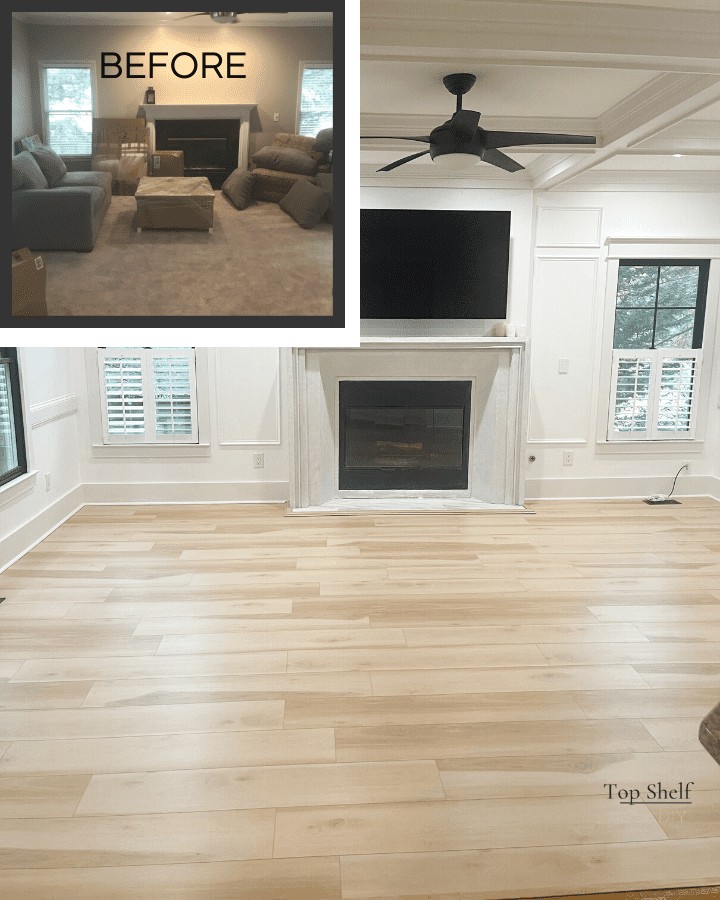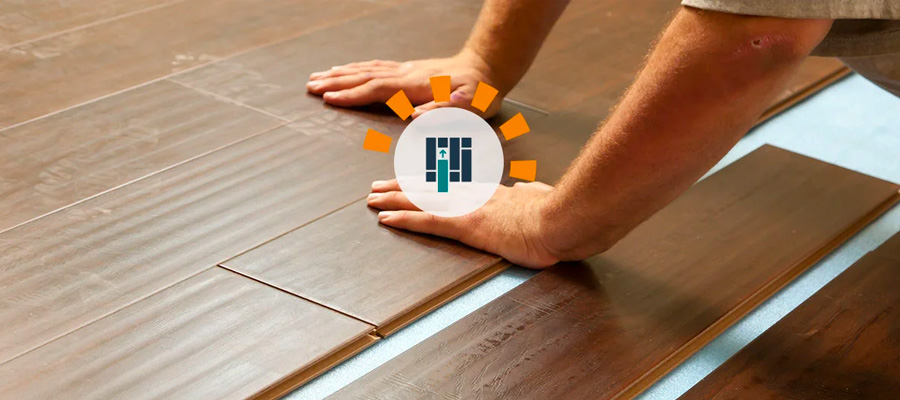Vinyl plank flooring should be acclimated for at least 48 hours before installation to adjust to the temperature and humidity of the room. Introducing vinyl plank flooring to your space requires careful acclimation to ensure optimal performance and longevity.
Acclimation involves allowing the flooring to adapt to the temperature and humidity of the room in which it will be installed. This process is crucial, as it prevents the vinyl plank flooring from expanding or contracting after installation, which could lead to unsightly gaps or warping.
To properly acclimate vinyl plank flooring, it is recommended to leave the unopened boxes in the room for at least 48 hours. This allows the planks to acclimatize and ensure a seamless and stable installation. Now that you know the importance of acclimation, let’s explore the step-by-step process to achieve the best results with your vinyl plank flooring.
Why Acclimation Is Important
Acclimating vinyl plank flooring for the recommended time frame is vital. Proper acclimation ensures that the flooring adjusts to room temperature and humidity levels, preventing potential problems like warping or buckling.
Why Acclimation is ImportantEnsuring Long-Lasting Results: Acclimating vinyl plank flooring is a crucial step to ensure its longevity and prevent issues like warping and buckling. By allowing the flooring to acclimate, you are allowing it to adjust to the temperature and humidity levels of its environment. This is important because extreme temperature and humidity changes can cause the planks to expand or contract, leading to potential damage. Acclimation typically involves leaving the flooring in the room where it will be installed for a specified period, usually around 48 hours. During this time, the planks will gradually adjust to the conditions, minimizing the risk of any detrimental effects. Taking the time to properly acclimate your vinyl plank flooring will help maintain its integrity and provide long-lasting, beautiful results.
Preventing Warping and Buckling Issues: Acclimation is especially crucial for vinyl plank flooring to prevent warping and buckling. Warping occurs when the planks twist or distort, while buckling refers to the lifting or separation of the planks. These issues not only compromise the aesthetics of your flooring but can also present safety hazards. By allowing the planks to acclimate to the room’s conditions, you reduce the chances of these problems occurring. Remember, the acclimation period may vary depending on factors like climate and manufacturer recommendations. Be sure to follow the specific guidelines provided by the flooring manufacturer to ensure optimal results. Acclimating your vinyl plank flooring is a small investment in time that can yield significant benefits in the long run.
Factors Affecting Acclimation Time
Acclimating vinyl plank flooring is an important step in ensuring a successful installation. The acclimation time can vary based on several factors.
| Factors Affecting Acclimation Time |
|---|
| Temperature and Humidity Levels |
| Flooring Material Composition |
Temperature and humidity levels play a significant role in the acclimation process. Vinyl plank flooring should be acclimated at the temperature and humidity levels that closely resemble the conditions of the installation area. This helps the planks to adjust and expand or contract accordingly, minimizing the risk of issues such as gaps or buckling in the future.
Flooring material composition is another important factor to consider. Vinyl planks with different thicknesses and compositions may require different acclimation times. It’s essential to refer to the manufacturer’s guidelines to determine the specific acclimation time needed for the chosen vinyl plank flooring.
How To Acclimate Vinyl Plank Flooring
Acclimating vinyl plank flooring is an important step to ensure its stability and longevity. To start, measure and record the initial dimensions of the installation area. This will help you determine the amount of flooring needed and plan the layout accordingly.
Next, unbox the flooring and arrange it in the space where it will be installed. It’s essential to leave sufficient gaps between the planks to allow for expansion and contraction. This will prevent buckling or warping of the flooring in the future.
Finally, be patient and allow adequate time for acclimation. The specific time required will depend on factors such as the manufacturer’s recommendations and the climate conditions in your region. It’s generally recommended to let the vinyl plank flooring acclimate for at least 48 hours before installation.
Recommended Acclimation Timeframes
Vinyl plank flooring requires acclimation to the environment before installation to ensure optimal performance and longevity of the flooring. Manufacturer recommendations for acclimation timeframes may vary, but following their guidelines is crucial.
| Climate Zone | Recommended Acclimation Time |
|---|---|
| Hot and Humid Climate | 48-72 hours |
| Cold Climate | 72-96 hours |
| Moderate Climate | 24-48 hours |
- Hot and Humid Climate: Ensure proper ventilation during acclimation. Store the flooring in a cool, dry area to avoid moisture absorption.
- Cold Climate: Keep the flooring in a heated environment during the acclimation process to prevent contraction and potential buckling.
- Moderate Climate: Maintain a consistent temperature and humidity level in the room where the flooring will be installed.
By following these recommended acclimation timeframes and climate-specific tips, you can ensure that your vinyl plank flooring adjusts to its environment properly and provides a beautiful, long-lasting flooring solution for your space.
Signs Of Proper Acclimation
Acclimating vinyl plank flooring is an essential step that ensures a successful installation. Proper acclimation allows the flooring material to adjust to the temperature and humidity of its environment, minimizing the risk of issues such as buckling or warping. As for signs of proper acclimation, pay attention to the surface appearance and texture of the vinyl planks.
Surface Appearance and Texture: During the acclimation process, the vinyl planks should maintain their original appearance and texture. If the flooring looks unchanged and feels consistent to the touch, it indicates that acclimation has been carried out correctly. Be sure to inspect the planks closely for any visible changes, such as warping, cupping, or discoloration, as these could indicate inadequate acclimation.
Flexibility and Moldability: Another sign of proper acclimation is the planks’ flexibility and moldability. When correctly acclimated, vinyl flooring should be easy to bend and shape without showing signs of resistance or stiffness. If the planks feel brittle or break upon flexing, it could suggest an insufficient acclimation period.

Common Mistakes To Avoid
One common mistake to avoid when acclimating vinyl plank flooring is rushing the process. It’s important to give the flooring enough time to adjust to the environment it will be installed in. Rushing can lead to improper installation and potential issues down the line.
Another mistake to avoid is neglecting temperature and humidity monitoring. Vinyl plank flooring can expand and contract with changes in temperature and humidity, so it’s crucial to ensure that these factors are within the recommended range before installing the flooring. Failure to do so can result in warping or buckling of the planks.
Proper acclimation of vinyl plank flooring is essential for a successful installation. Avoiding common mistakes such as rushing the process and neglecting temperature and humidity monitoring will help ensure that the flooring lasts for years to come.
Tips For Effective Acclimation
Proper acclimation is crucial to ensure the successful installation of vinyl plank flooring. To acclimate the flooring effectively, it is important to maintain optimal temperature and humidity levels. Store the flooring in a room where the temperature and humidity match the conditions of the room where it will be installed.
Keep the flooring away from direct sunlight, as prolonged exposure can cause warping or damage. Avoid storing the flooring in areas with extreme temperatures, such as garages or basements, as this can also affect its acclimation. It is recommended to let the flooring acclimate for at least 48 hours, but specific manufacturer guidelines should be followed for accurate acclimation time.
Additionally, ensure that the subfloor is clean, dry, and level before installation. This will provide a sturdy base for the flooring. Following these tips for effective acclimation will help to ensure a successful vinyl plank flooring installation.
Frequently Asked Questions On How Long Do You Have To Acclimate Vinyl Plank Flooring
What Happens If You Don’t Acclimate Vinyl Plank Flooring?
If you don’t acclimate vinyl plank flooring, it can cause problems like warping, buckling, or gaps between the planks. Acclimating allows the flooring to adjust to the temperature and humidity of the room, ensuring a better fit and preventing these issues.
Is 24 Hours Long Enough To Acclimate Vinyl Flooring?
Yes, 24 hours is typically enough time for vinyl flooring to acclimate.
Does Vinyl Plank Flooring Need To Acclimate Before Installing?
Vinyl plank flooring needs to acclimate before installing. This allows the material to adjust to the temperature and humidity of the room, ensuring a proper installation. Acclimation typically takes around 48 hours, during which the flooring should be stored in the room where it will be installed.
How Soon Can You Walk On Vinyl Plank Flooring After Installation?
You can walk on vinyl plank flooring immediately after installation.
Conclusion
To ensure the long-lasting performance of your vinyl plank flooring, it is crucial to allow sufficient time for acclimation. By allowing the planks to adjust to the temperature and humidity of the surrounding environment, you can prevent issues like warping and buckling.
Remember, patience is key when it comes to acclimating vinyl plank flooring. Give it the time it needs, and you’ll enjoy beautiful and durable floors for years to come.




